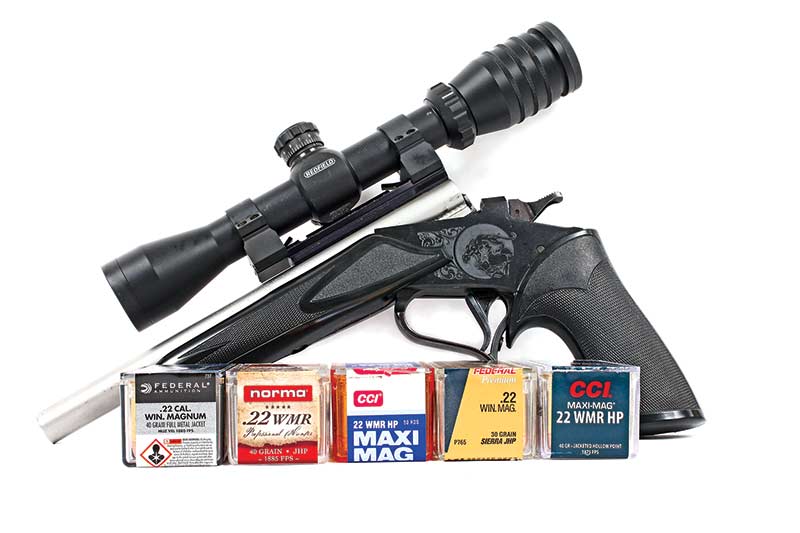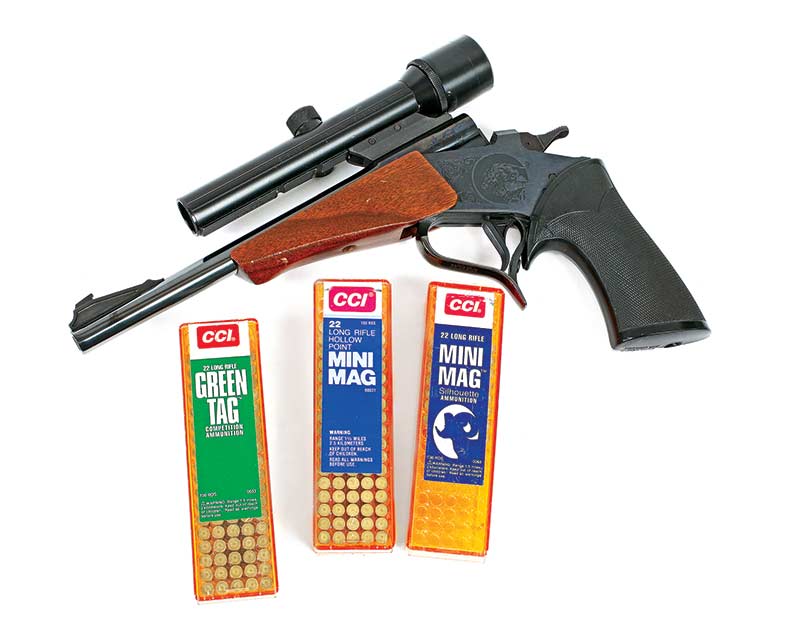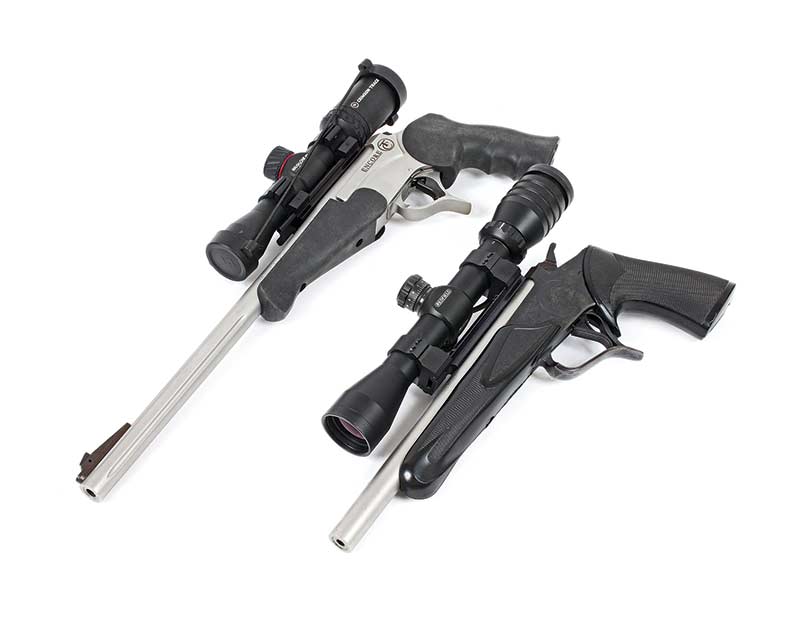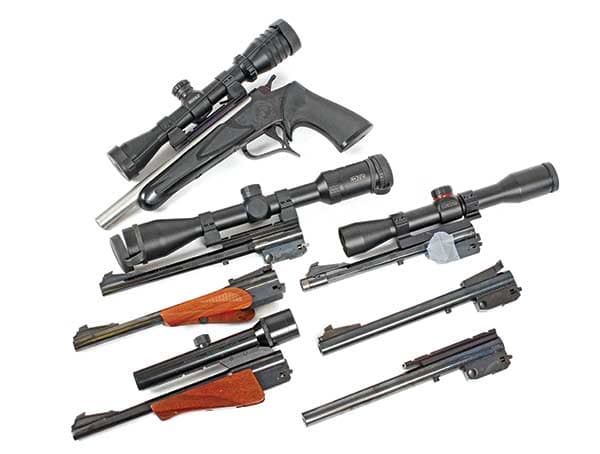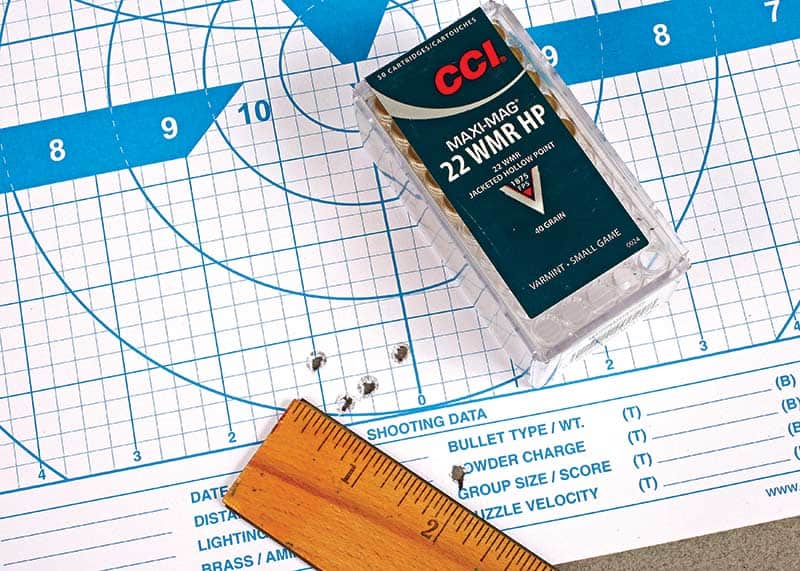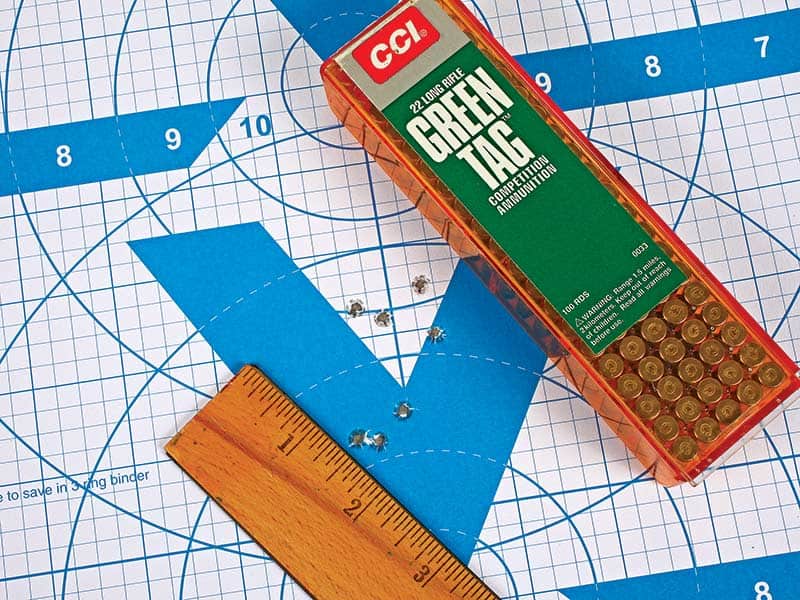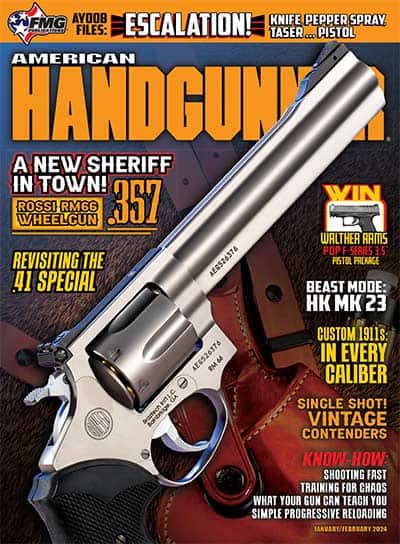Single-Shot Shooters …
Vintage TC Contenders
In the middle 1970s, I saw my first Thompson Center Contender in a local gun store. It was unusual, being a single-shot, break-open, external hammer gun, but that uniqueness hinted at intriguing possibilities. Simply put, once I saw it in the flesh, it captured my imagination, and I had to know more. As it sat there among the DA revolvers and 1911 pistols, it presented itself as if it were making a statement: “I’m different — but worth the chance.”
The model I saw was a very early gun from the late 1960s and had the classic TC wooden stock and forend. The barrel was the slim octagonal one, chambered in .22 LR. It had adjustable sights and it went home with me after a very long five-day wait at the time. Thank you, California.
The Thompson Center concept was a joint effort among a very small handful of gun guys of the time. After much design and prototyping work, the original Contender saw the light. At first, the shooting public and gun press panned it. “What, no safety? Why would you only want a single shot to hunt with? You can change the barrels? That’s crazy; why would you want to do that?!” At the time, the firearms press was staunchly traditional and populated by writers who were more than likely born close to 1900 or so. Can you say closed-minded?
Fortunately, the founders stayed the course, and soon, the shooting public learned to endorse this amazingly versatile — and accurate — single-shot handgun. New caliber selections were added as time passed, and soon, everything from the .22 LR and .22 Magnum to the .30-30 and beyond could be had. Companies like SSK took the basic gun and ran with it, creating custom creations in daring calibers like .375 JDJ and others. Grip maker Steve Herrett and gun writer Bob Milek used the TC design, creating the .30 and .357 Herrett in the early ’70s. This kind of work turned the Contender into a true big game gun in the right hands.
But for me, the simple elegance of the design held sway. By distilling things down to the basics, the design almost forces a shooter to take their time while shooting. Each step is methodical, from opening the action, to loading to cocking the hammer and settling for the shot — promoting careful thought and a steady hand. You get some amazing accuracy from virtually any caliber barrel, going far to help a shooter create accurate loads for his favorite cartridges. The TC design is truly like a sort of mini-rifle if you do your part.
Learning Curves
That original .22 barrel showed potential for great accuracy, but I was limited by the iron sights. Sub-1″ groups at 25 yards were easy, but I knew it had more potential. At the time, Bushnell made one of the very first handgun scopes, calling it the “Phantom.” At 1.3X, it had a narrow field of view and not much power, but the crosshairs made a huge difference.
Once mounted, the scope delivered 25-yard groups as ragged single holes. Gosh. At 50 yards, 1″ groups were the norm. In a bold move, I pushed it out to 100 yards and, on a calm day, could chase 1.5″ to 2″ easily. To say this raised the bar for handgun hunting small game profoundly understated matters.
By the middle 1980s, I had a half-dozen or so new barrels, and today, they seem to have gained momentum somehow, and I remain convinced barrels self-procreate in the safe. I have the standard calibers like the .22 LR, .22 Magnum, .357 Magnum, .44 Magnum, .45 Colt and even a .30-30 (which does yeoman duty on Missouri deer, I might add). But by some marvel, I seem to have acquired a .221 Fireball barrel, .222 Remington, .22 Hornet, .223, .32-20, .32 H&R Magnum and … um … maybe a few others. But they’re handy if you need to test the accuracy of a given load, so that’s my excuse, and I’m sticking to it.
TC Contenders and later Encore designs (bigger, stronger frames) won my heart completely, and I smile every time I see one of mine. If you’re really interested — or if you’d like to be interested — I recommend you join the Thompson Center Collectors Association. You can find them at ThompsonCenterAssociation.org, or you can give the president, Art Lamontagne, a call at (207) 252-3663. Their quarterly One Good Shot magazine is worth the price of admission alone and is chock-full of articles, info, how-to, classified ads and lots more.
Today, you can often find a Contender with a barrel and often a scope around the $600 to $800 mark. Then additional barrels are on eBay and other sources from about $250 on up, so you can add a caliber easily and affordably. Look into it, you’ll have a single-shot blast!

